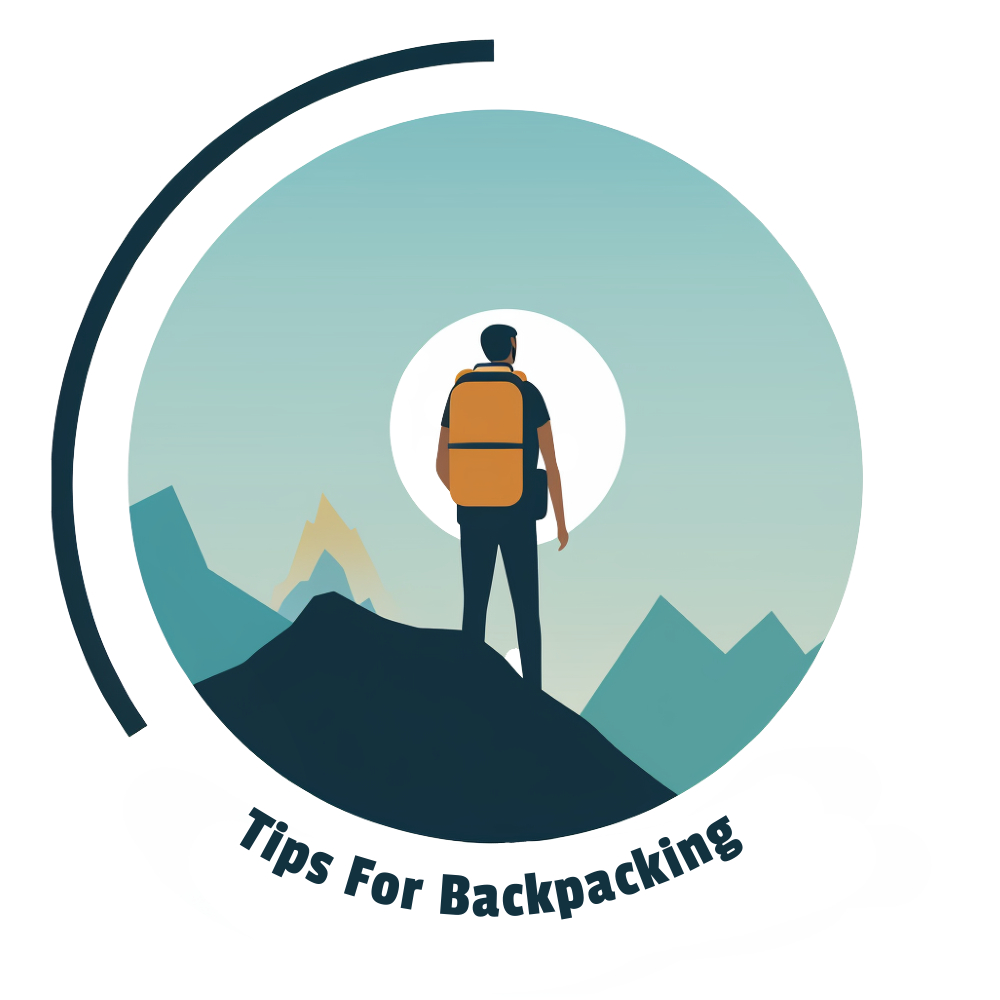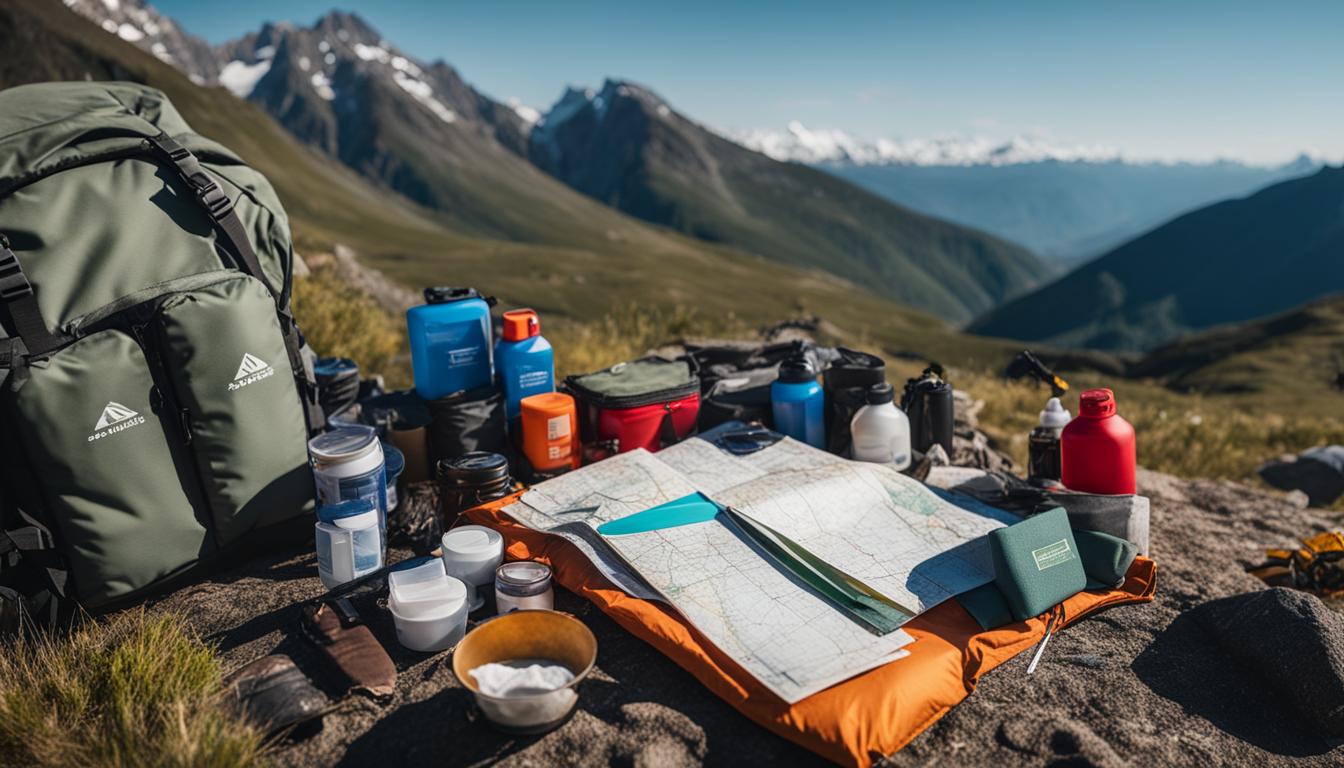Before heading out on a backpacking trip, it’s important to be prepared and have all the necessary gear and supplies. This backpacking preparation checklist will help ensure that you have everything you need for a successful wilderness journey.
The checklist includes items such as hiking boots or shoes, a backpack, tent, sleeping bag, stove and fuel, kitchen supplies, food and water, weather-appropriate clothing, emergency and hygiene supplies, and more. It also includes a list of the Ten Essentials, which are important items for any backpacking trip. Use this checklist to make sure you have everything you need and to help you prepare for your first overnight backpacking trip.
Key Takeaways:
- Make sure to have all the necessary gear and supplies for your backpacking trip.
- Include items such as hiking boots, a backpack, tent, sleeping bag, and kitchen supplies.
- Pack weather-appropriate clothing and essential emergency and hygiene supplies.
- Follow the Ten Essentials checklist to ensure you have important items for any backpacking trip.
- Proper preparation is essential for a successful and enjoyable backpacking experience.
Choosing the Right Gear
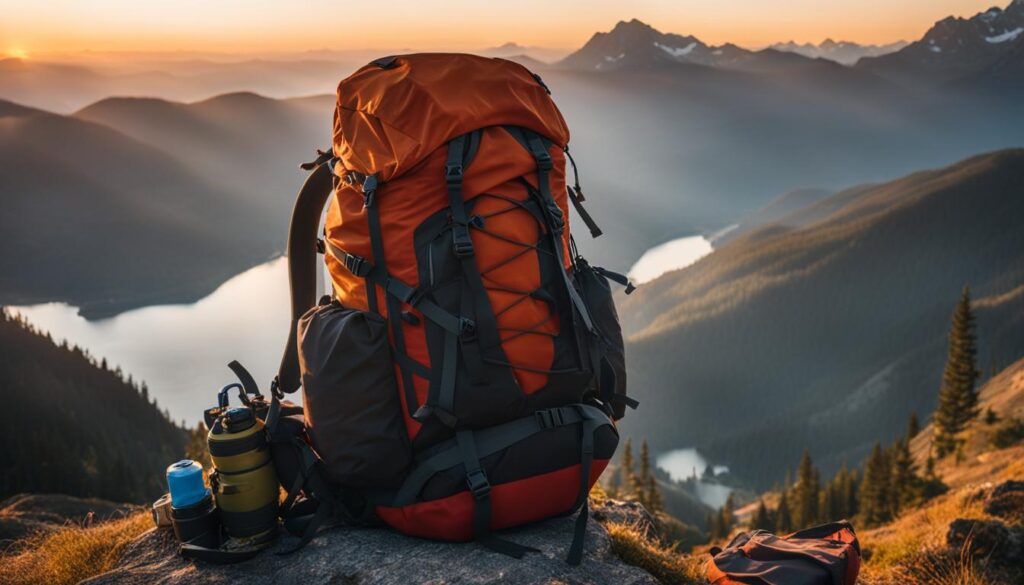
When it comes to backpacking, having the right gear can make all the difference in your comfort and enjoyment during your trip. It’s important to choose gear that is lightweight, durable, and suited to your specific needs. Here are some key considerations when selecting your backpacking gear:
Shelter
Your shelter is one of the most important pieces of gear you’ll need. Consider the weight, size, and weather resistance of your shelter options. Tents, tarps, and hammocks are popular choices. Look for a shelter that is easy to set up and provides adequate protection from rain and insects.
Sleep System
A good night’s sleep is crucial when backpacking. Your sleep system should include a sleeping bag or quilt, a sleeping pad for insulation and comfort, and a camping pillow for added comfort. Choose a sleeping bag that is suitable for the expected temperatures and consider the weight and packability of your sleeping pad.
Navigation Equipment
Having the right navigation equipment is essential for staying on track during your backpacking trip. Carry a topographic map of the area you will be exploring and a compass for navigation. Depending on your preference and the complexity of your route, you may also want to bring a GPS or a satellite messenger for extra safety.
Personal Hygiene
Personal hygiene is important even when you’re out in the wilderness. Pack essential items such as a trowel for burying waste, toilet paper, hand sanitizer, and sunscreen. Consider the environmental impact of your hygiene products and opt for biodegradable options when possible.
Electronics
While it’s important to disconnect and enjoy nature, certain electronics can enhance safety and convenience during your backpacking trip. Consider bringing a power bank to keep your devices charged, a reliable headlamp for navigating at night, and a satellite messenger for emergency communication.
| Item | Considerations |
|---|---|
| Tent, Tarp, or Hammock | Weight, size, weather resistance |
| Sleeping Bag or Quilt | Temperature rating, weight, packability |
| Sleeping Pad | Insulation, comfort, weight, packability |
| Camping Pillow | Comfort, size, packability |
| Topographic Map | Accuracy, coverage, waterproofness |
| Compass | Reliability, ease of use |
| GPS or Satellite Messenger | Extra safety, emergency communication |
| Trowel | Durability, weight |
| Toilet Paper | Softness, biodegradability |
| Hand Sanitizer | Alcohol content, size |
| Sunscreen | SPF, water resistance |
| Power Bank | Capacity, weight, compatibility |
| Headlamp | Brightness, battery life |
| Satellite Messenger | Reliability, emergency features |
Packing Food and Clothing
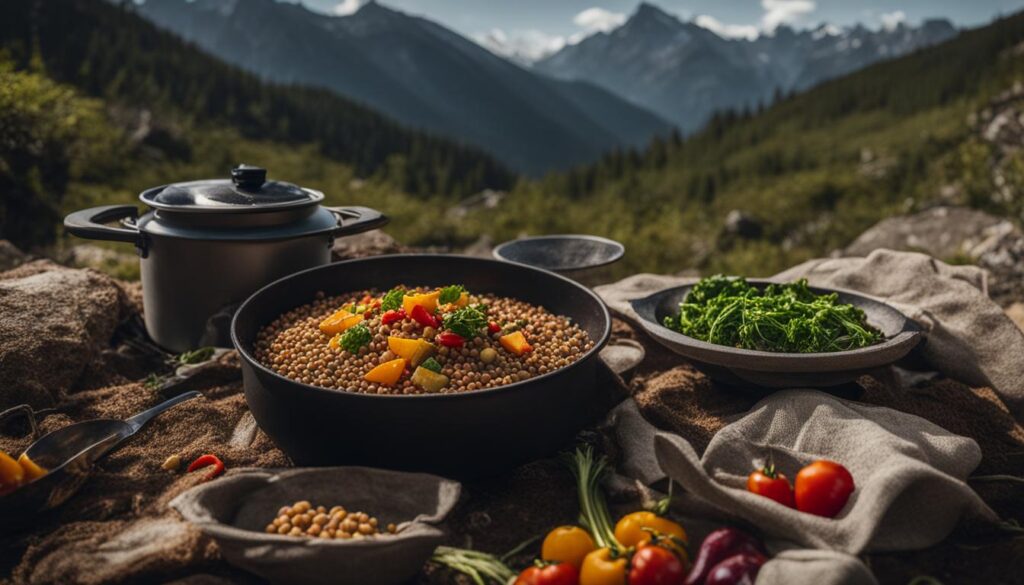
When going on a backpacking trip, packing the right food and clothing is essential for a successful and enjoyable experience. Here are some tips to help you make the best choices:
Backpacking Food:
- Choose lightweight, calorie-dense foods: Opt for dehydrated meals, trail mix, energy bars, and instant noodles. These foods provide the energy you need without adding unnecessary weight to your backpack.
- Pack enough food: Calculate the number of meals and snacks you’ll need for each day of your trip, plus an extra day’s worth in case of emergencies.
- Variety is key: Aim for a mix of carbohydrates, protein, and fats to keep your energy levels balanced throughout the trip. Include a variety of flavors to avoid taste fatigue.
- Consider dietary restrictions: If you have any dietary restrictions or allergies, make sure to pack suitable food options that meet your needs.
Clothing for Backpacking:
- Choose lightweight and moisture-wicking materials: Look for clothing made from synthetic or merino wool fabrics that dry quickly and wick away sweat.
- Layering system: Opt for a layering system that allows you to adjust your clothing based on the weather conditions. Include base layers, insulating layers, and a waterproof and windproof outer layer.
- Footwear: Select appropriate footwear based on the terrain and weather conditions. Hiking boots or shoes with good traction and ankle support are recommended for most backpacking trips.
- Pack extra socks: It’s essential to keep your feet dry and blister-free. Pack extra pairs of socks and consider using moisture-wicking and blister-resistant socks.
Remember, packing food and clothing that are lightweight, versatile, and suitable for the expected weather conditions will help you stay comfortable and well-nourished throughout your backpacking journey. Now that you know what to pack, it’s time to hit the trails and enjoy the great outdoors!
“The journey of a thousand miles begins with a well-packed backpack.” – Anonymous
Essential Accessories and Safety Gear
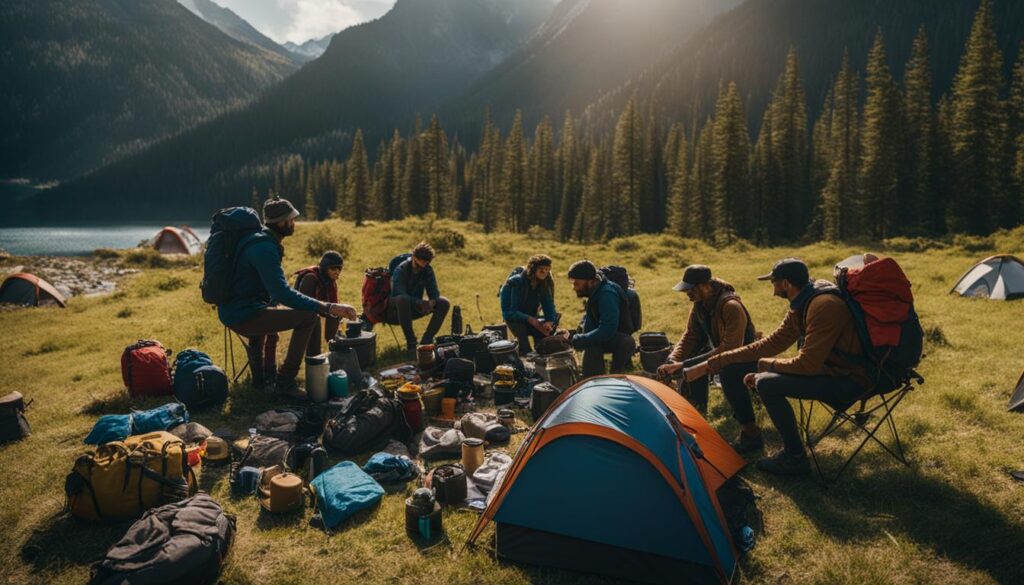
When embarking on a backpacking trip, it’s crucial to have the right accessories and safety gear to ensure a safe and enjoyable journey. These essential items provide added convenience, preparedness, and peace of mind while exploring the wilderness.
One of the most important accessories is a well-stocked first aid kit. This kit should include bandages, adhesive tape, antiseptic wipes, pain relievers, and any necessary prescription medications. Additionally, consider adding a compact water storage and filtration system to ensure a clean and safe water supply throughout your trip. This will help prevent dehydration and protect against waterborne illnesses.
A reliable stove and cookware set are also essential for preparing hot meals and beverages on the trail. Look for lightweight options that are easy to pack and use. By having the right cooking tools, you can enjoy warm and nourishing meals even in remote locations.
Navigation tools, such as a map and compass, are crucial for finding your way in unfamiliar terrain. In addition to these essentials, consider carrying a GPS device or a satellite messenger for added navigation and emergency communication capabilities. This will provide an extra layer of safety and allow you to share your location with loved ones.
Essential Accessories and Safety Gear Checklist
| Item | Description |
|---|---|
| First Aid Kit | A well-stocked kit with essential medical supplies |
| Water Storage and Filtration System | Compact and efficient system for clean drinking water |
| Stove and Cookware | Lightweight and portable cooking equipment |
| Navigation Tools | Map, compass, GPS, or satellite messenger |
| Personal Hygiene Items | Trowel, toilet paper, hand sanitizer, and sunscreen |
| Electronics | Power bank, headlamp, and satellite messenger |
| Emergency Kit | Whistle, duct tape, matches, and emergency shelter |
By prioritizing these essential accessories and safety gear items, you’ll be well-prepared for any challenges you may encounter during your backpacking adventure. Remember to always prioritize safety, pack responsibly, and leave no trace. Happy trails!
Conclusion
As I wrap up this article on backpacking preparation, I want to emphasize the importance of being well-prepared for your outdoor adventure. Following a comprehensive backpacking preparation checklist is crucial to ensure that you have all the essential gear, pack the right food and clothing, and include necessary safety gear.
By going through the checklist, you’ll be able to gather all the essential gear you need for a successful trip. From your backpack and shelter to navigation equipment and personal hygiene items, make sure you have everything on the list to stay safe and comfortable throughout your journey.
In addition to gear, carefully consider the food and clothing you pack. Calorie-dense lightweight food options will provide you with the energy you need, while proper layering and moisture-wicking clothing will keep you comfortable in varying weather conditions.
Lastly, don’t forget to include important safety gear, such as first aid supplies, water storage and filtration systems, and navigation tools. These items will ensure your safety and well-being on the trail.
In conclusion, by following a comprehensive backpacking preparation checklist and having the right gear, food, clothing, and safety equipment, you’ll be well-prepared for your adventure. Take the time to tailor your checklist to your specific trip requirements, and you’ll be ready to embark on an incredible backpacking journey. Happy trails!
What Items Should Be Included in a Backpacking Preparation Checklist?
When preparing for a backpacking trail adventure, it’s essential to have a comprehensive checklist. Key items to include in your preparing backpack trail checklist are a reliable backpack, camping gear, navigation tools, first aid kit, proper clothing, food and water supplies, and emergency essentials. Planning ahead is crucial for a successful trip.
FAQ
What should be included in a backpacking preparation checklist?
A backpacking preparation checklist should include essential gear such as hiking boots, a backpack, tent, sleeping bag, stove and fuel, kitchen supplies, food and water, weather-appropriate clothing, emergency and hygiene supplies, and more. It should also include the Ten Essentials, which are important items for any backpacking trip.
How do I choose the right gear for backpacking?
When choosing gear for backpacking, it’s important to select a backpack that is the appropriate size and fit, choose a lightweight shelter such as a tent, tarp, or hammock, and select a sleep system that includes a sleeping bag or quilt, sleeping pad, and camping pillow. It’s also important to have necessary navigation equipment and personal hygiene items, as well as electronics for safety and convenience.
What should I pack for food and clothing on a backpacking trip?
When packing food for a backpacking trip, choose lightweight, calorie-dense foods that are easy to prepare and provide the energy you need. Pack enough food for each day of your trip, plus an extra day’s worth in case of emergencies. For clothing, opt for lightweight, moisture-wicking, quick-drying materials suitable for the weather conditions. Consider a layering system and choose appropriate footwear for your trip.
What essential accessories and safety gear should I bring on a backpacking trip?
Essential accessories and safety gear for backpacking include items such as a whistle, duct tape, sleep pad patch kit, stormproof matches, backup lighter, backup water treatment pills, first aid kit or supplies, water storage and filtration systems, stove and cookware, navigation tools, personal hygiene items, and electronics such as a power bank and headlamp. Additionally, an emergency kit should be packed with items like a whistle, duct tape, matches, and emergency shelter.
How important is it to properly prepare for a backpacking trip?
Properly preparing for a backpacking trip is essential for a successful and enjoyable experience. By following a backpacking preparation checklist, you can ensure that you have all the essential gear, pack the necessary food and clothing, and include important safety gear and accessories. Tailor your checklist to the specific requirements of your trip. With the right preparation and gear, you’ll be ready to embark on your backpacking adventure with confidence.
